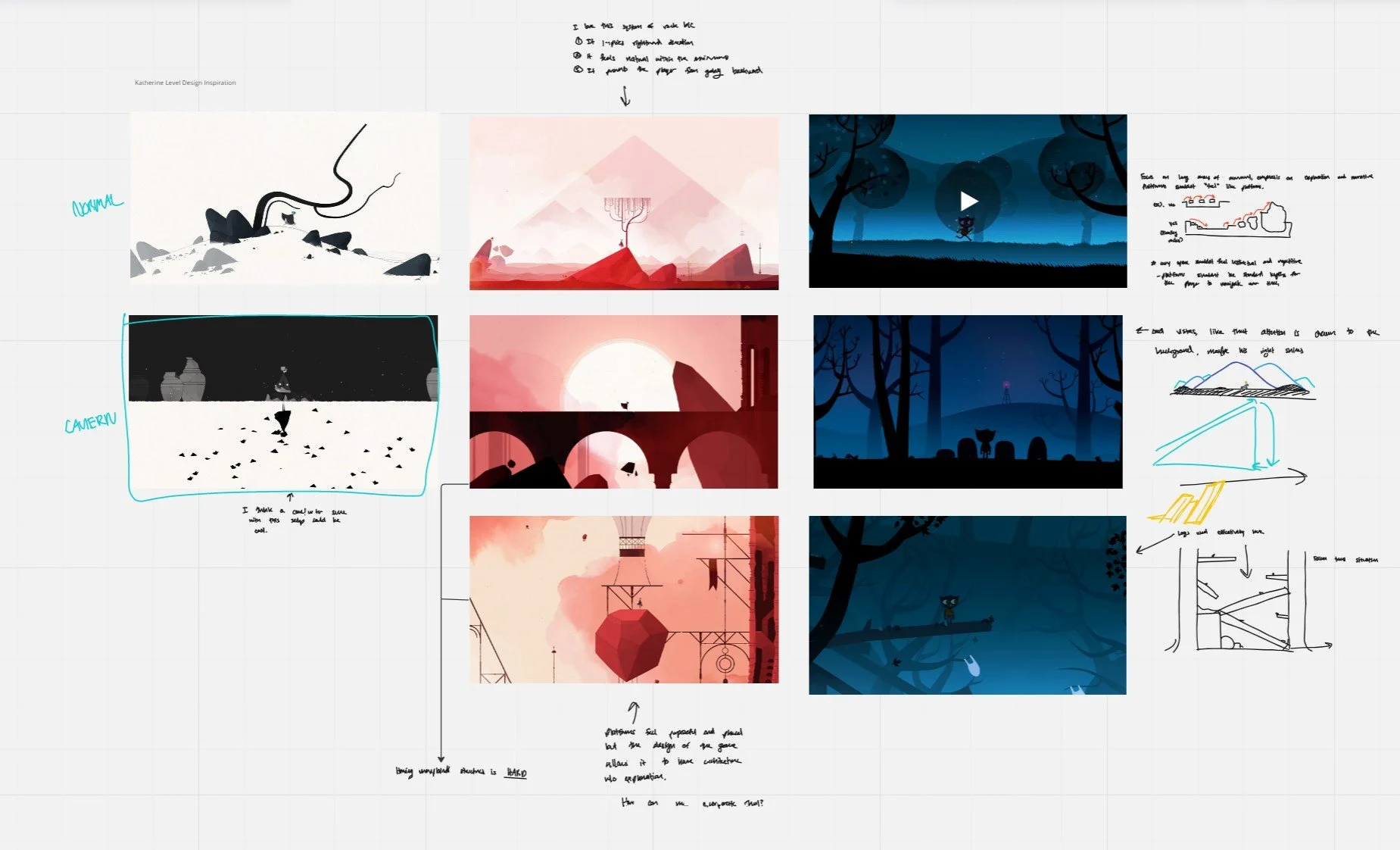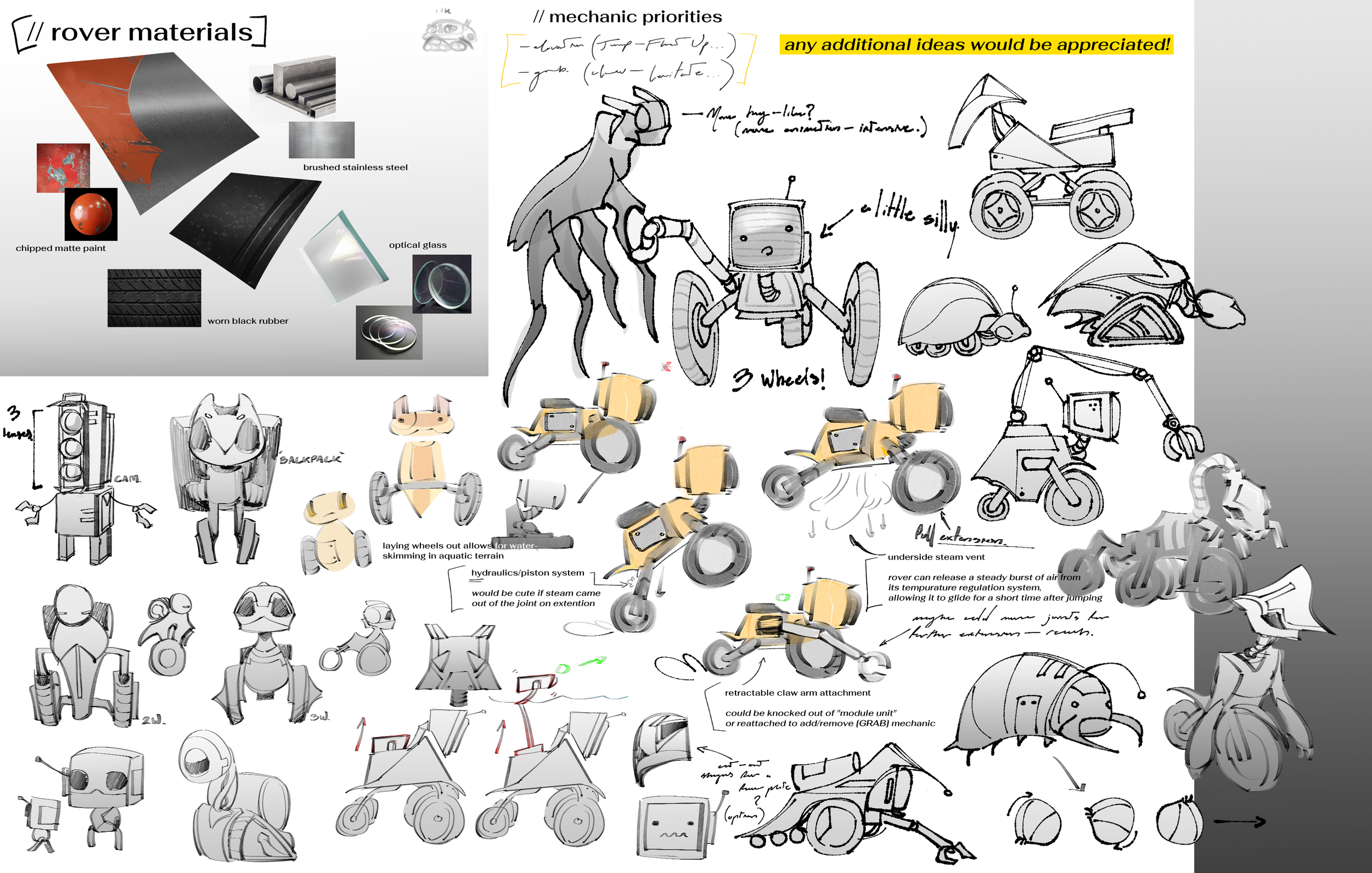introducing Atlas…
ASUNDER is a sidescrolling platformer game about a little rover exploring a vast planet. Categorize alien flora and uncover stunning vistas as you venture forth to complete the rover’s mission objectives. As you encounter new life and visit the diverse biomes of the world, you will discover companionship in the very spaces you occupy.
Develop your relationship with the planet and learn about the rover who visited BG-308A before you, as you and the planet question what it means to be alone, yet together. While the rover is certainly capable of rolling, jumping, winching, beeping, and scanning, connecting with the planet might not be so easy.
a short summary…
How do we move forward, when we lose what we move for?
ASUNDER serves as a landmark project that helped inform me of the game development process. Alongside a fantastic team, this game has taken shape since its inception at the beginning of January, 2023 to grow into something much larger than its parts. I had the priviledge of designing the levels and mechanics of the game, filling technical art roles, and closely communicating with the other members of my team to craft an experience we hope will be truly compelling.
You can find a more detailed explanation of our progress below.
breaking ground…
For this project, I analyzed games such as Gris and A Night in the Woods to analyze their level structure.
Gris provides a very atmospheric setting that allows the player to feel lost, which was one of our pillars we decided on when constructing ASUNDER. I always loved the fluidity of the scenery, and how it seamlessly blended together to create some very distinct environments.
A Night in the Woods, on the other hand, utilized color and gradients to establish moody, yet cohesive, environments. Working with Danny, our art director, I wanted to streamline the artistic process to ensure that each asset could be manipulated by every team member, meaning something similar to ANITW would prove useful.
With both games, I noticed that I never felt like the world was too busy, and the isolation I felt was one of comfort. As such, wanted ASUNDER to feel just as spacious, without creating any lingering sentiments of loneliness.
Compiling Inspiration:
The moodboard for ASUNDER, and notes about level layout
While concepting the game, each member worked equally to develop a protagonist that resonated with all of us. I wanted to design controls that felt simplistic and inherent to the player. Isaac wanted a robot that would allow him to experiement with a robust character controller. Danny wanted to play with animalistic styles while balancing making our protagonist feel loveable. Emily wanted his design to feel man-made and personal (as well as have ears).
With these ideas in mind, Danny drafted some amazing rover designs, and we settled on the yellow concept.
Noting the design of the rover, I wanted the game to feel easily navigable, as if he was specifically constructed for the environment. This caused me to work backwards, noting how I thought he would move, and then ensuring that all of the terrain must easily fit within the scope of his capability.
As such, the game has no sharp drops or tricky sections to maneuver. All of the platforms ATLAS can fit on easily, and there are many moments that encourage the player to rest and take in their surroundings.
Translating Design into Concept:
Preliminary concept art for ATLAS
The Pivot…
After presenting our first prototype, we received crucial feedback that signaled to us that a pivot was needed. Our initial version was too restricting and bleak, with players perceiving the isolation as depressive.
While keeping our core movement mechanics, we wanted to redesign both the narrative and the level design of the game to better support a platform-like feel whilst also changing the design of the landscape to be more inviting.
Thus, we redesigned our world to be a planet composed of floating islands, and the player was tasked with categorizing flora found around the landscape. We also added a winching mechanic, so players could ascend and descend around our islands.
Our decision to use islands also freed up our ability to design levels, as our landmasses could be rotated or scaled to create new, intriguing landscapes without adding extra pressure on our artist to create more assets.
Initial level ideas incorporating our redesigned landscape


